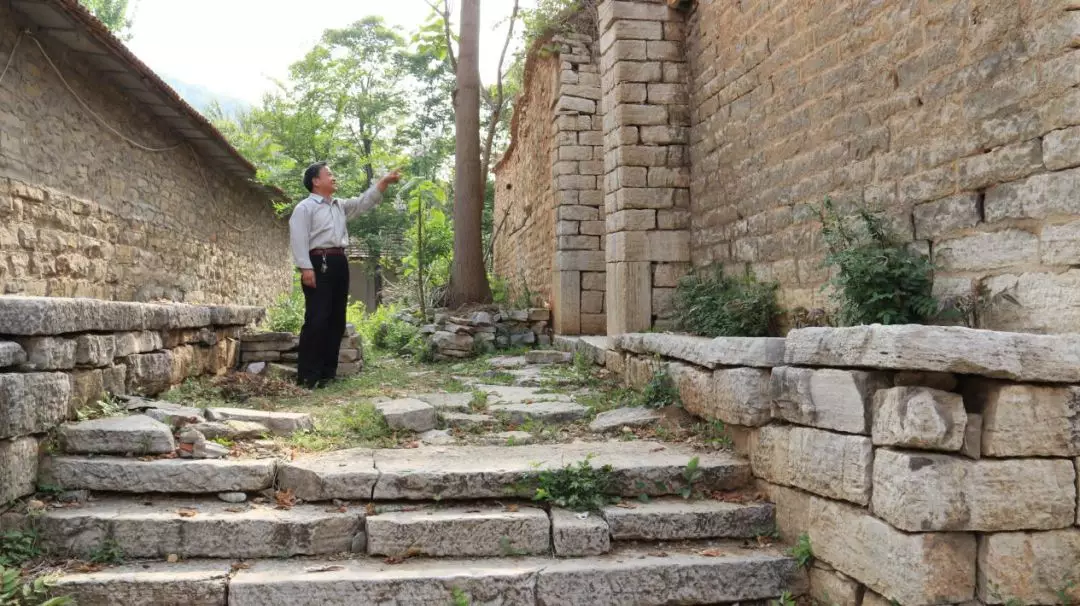【Basic information】Wangjiazhuang Village, 3200 acres, cultivated land area of 304 acres, 210 households, 580 people, located 4 kilometers south of Ezhuang, 36º24 ′ north latitude 118º10 ′ east longitude, elevation 427 meters. Traditional village of Shandong Province, traditional (cultural) village of Shandong Rural Memory Project. The hometown of the prototype character of the classic Shandong Lu opera "Wang Dingbao Borrowing Dang".
【Village Origin】The village was built in the early years of the Ming Dynasty. According to Wang's tombstone, "During the Ming Hongwu period (1368-1398), the Wang clan moved from Zaoqiang to Wangjiazhuang in Jiasang Valley Malingshe, Huaide Township, Yidu County." The village is named "Wangjiazhuang" after the surname. In the eighteenth year of the Kangxi Dynasty (1679) of the Qing Dynasty of the Village West, the wang family generation name inscription is called "Wang Jiazhuang". Main surnames: Wang, Xiao, Li, Sun, Pu, Su, Zhang.
Wangjiazhuang Village has a forest coverage rate of more than 90%, and in 2015 it was rated as a provincial-level traditional ancient village. Wangjia stone carving wood carving handicrafts are famous far and wide, there is a national arts and crafts master, provincial and municipal arts and crafts masters. Many families have small workshops for stone carving and wood carving, and their craft works are exported all over the world.
Wangjiazhuang Village is rich in humanistic resources, including the former residence of Wang Dingbao, the prototype of shandong Lv opera "Wang Dingbao Borrowing Dang", the ancient courtyard where Ezhuang celebrity Li Banxian lived as a teenager, and the Tombstone of Wang's family erected in the eighteenth year of Kangxi.
In recent years, 9 kilometers of development and hardening of production roads, more than 900 acres of yellow smoke have been planted annually, the implementation of the transformation of tap water projects, the realization of full coverage of tap water into households, the construction of 4 safe drinking water ponds, 26 agricultural and forestry production pools, the installation of 29 solar street lights, has developed eight farms, built a happiness home for the elderly, two cultural squares. With the help of the party's good policies, Wangjiazhuang Village established a rural tourism cooperative, Kaisheng Tourism Development Co., Ltd.; in 2017, it invested 1.64 million yuan to build a tourism sketching reception center.
【Notes on Collecting Wind】New discoveries in Wangjiazhuang.
Wang Dingbao in the famous Shandong Lü opera "Wang Dingbao Borrows Dang", whose original name was Wang Liankai. It is recorded on Wang's tombstone. Wang Liankai had an older brother named Wang Liangguang, and his father was named Wang Dang. In 1369, Wang Dingbao's father and brother-in-law Zhang Yaoyao's family wandered from Shanxi to Ezhuang (then called "Wujiazhuang", which was renamed "Ezhuang" after the Wu clan died in the last years of the Ming Dynasty). The name of the village has been used ever since.
Previously, it was only known that Li Jiqing (Li Banxian), a celebrity in Ezhuang, was a native of Dongdaoping Village, and the tomb fell in Dongdongyu Village, and it was not known that Li Banxian also spent his childhood and adolescence in Wangjiazhuang. Listening to the introduction of the elders in the village, Li Banxian was born in Dongdaoping Village. Shortly after his birth, the family moved to Wangjiazhuang Village. His parents died at the age of 13, and at a young age, he lived with his aunt in Dongyu Village until his death. Regarding Li Banxian, there are three important time nodes related to "8": born in 1848, died in 1908, and the grave was excavated in 1968 to see the light of day; there are several key locations: Dongdaoping was born, Wang Jiazhuang spent childhood and adolescence, adults lived in Dongdongyu Village, and legend has it that Chengxian was the tianqiao under the Zhaoyang Cave of Tanxi Mountain. Today, Wangjiazhuang also preserves the courtyard where Li Jiqing's brother lived, Dongdaoping, Xidongyu, and the Xuanwu Temple of Shangduanshi is a temple commemorating Li Banxian.
Wang family carving is famous far and wide. The village currently has one national arts and crafts master and three provincial arts and craftsmen. A small family-style carving workshop is a major feature of the village, and now Wangjia carving has developed into a brand, and the products are well received by the market.
In recent years, Wangjiazhuang Village is working hard to build a sketch town project after the rural happiness hospital project and the boutique homestay project. When the rural memory team went, the construction site was in full swing, so our party was full of expectations for the future of Wangjiazhuang.

The gate of Wang Dingbao's former residence in Wangjiazhuang Village
Tombstone of Wang Dingbao Zumu in Wangjiazhuang Village
【Status】Public lighting, tap water to achieve full coverage, hardening production road 9 kilometers, 4 new drinking water ponds, 700 cubic meters of water, 26 agricultural production pools, built 8 farms, a happiness courtyard, two cultural squares. A tourism reception center with an investment of 1.46 million yuan is under construction.
【This article is selected from Xiumei Taihe, hereby thanks to the original author】